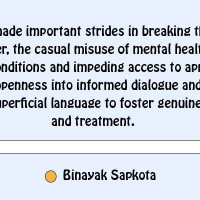- Thursday, 7 August 2025
Rethink About High Glycemic Foods
In an age where health consciousness is growing among us and people are becoming more conscious on food habits. The concept of the glycemic index (GI) has become more than just nutritional jargon but it is a key factor in understanding how food affects our bodies. Foods with a high glycemic index are those which raise blood glucose levels quickly. These foods are coming under more and more scrutiny from consumers besides medical professionals looking to lead healthier lives. However, there is still much disagreement over meals with a high GI.
Carbohydrates are categorised according to how quickly they elevate blood sugar levels after consumption using a glycemic index that ranges from 0 to 100. Foods with a GI score of 70 or above are rapidly digested, absorbed and produces surge in blood sugar levels. Examples of high GI index include white bread, potatoes, white rice, and sugary cereals. In contrast, foods with a low GI, like whole grains, legumes, and the majority of fruits, release glucose more slowly and steadily.
Prevailing narrative
The prevailing narrative often denigrates high GI foods, which links them to obesity, type 2 diabetes, and cardiovascular disease, and mood disorders. Despite the fact that scientific studies support these worries, the discussion of high GI meals is frequently oversimplified. Context is crucial in nutrition, as it is in many other areas. High GI diets have been associated with a higher incidence of insulin resistance, which may lead to type 2 diabetes. Weight gain can also be fueled by increased hunger and overeating brought on by rapid blood sugar rises and crashes.
High GI meals can be especially problematic for people who already have diabetes, making it more difficult to control blood sugar levels and increasing the risk of long-term complications. Moreover, foods with a high GI are frequently processed and low in essential nutrients. Fibre, protein, and healthy fats are frequently absent from diets high in refined carbohydrates. Those essential nutrients are necessary for sustaining energy levels, supporting digestion, and controlling weight. In today's eating environment, where convenience frequently takes precedence over nutrition, high GI meals are especially insidious due to their rapid energy and low satiety.
It is important to realise that meals with a high GI are not inherently evil, even with their unfavorable image. Particularly when it comes to when and how these items are ingested, context is important. Foods with a high GI can be very important for better performance in sports. They are frequently used by athletes as a source of rapid energy prior to, during, or following strenuous exercise. Rapid glucose absorption is actually advantageous in these circumstances, as it helps with recovery and replenishes glycogen stores. Similarly, high GI foods can offer quick relief during blood sugar drops for people with hypoglycemia.
Furthermore, not every item with a high GI is made equal. For instance, watermelon has a low glycemic load yet a high glycemic index. This indicates that consuming a normal portion does not, in fact, cause a significant rise in blood sugar levels. A bowl of sugary cereal, on the other hand, has a high glycemic load and a high GI, making it low in nutrients.
Cultural background is very important. White rice is a staple in many Latin American, Asian, and African nations. Such foods are frequently balanced with vegetables high in fibre, lean proteins, and healthy fats; to do otherwise is to disregard generations of culinary history. The content of a meal can considerably changes its GI. A high GI food's glycemic response can be decreased by including a supply of fat, protein, or even vinegar. Therefore, a more realistic picture of nutritional health is obtained by concentrating on complete dietary patterns rather than separating particular meals.
Food labeling and policy may also be important. Although it isn't common, several nations currently provide GI or glycemic load information on food labels. Customers, particularly those with diabetes or prediabetes, may be able to make better decisions if labels are standardised. Furthermore, the food sector has to assume accountability by reworking products to lower the glycemic impact without sacrificing accessibility or flavour. This entails cutting out on added sugars, utilising whole grains, and adding natural fibers.
Eating choices
Being attentive of one's eating choices is crucial on a personal level. People can benefit from focusing on how different foods make them feel rather than stressing over numbers. After eating, do you feel energised or lethargic? Does a certain meal satisfy your hunger for a snack within an hour or leave you feeling satisfied for hours? Often more successfully than strict dietary guidelines, these observations can help people make wiser decisions.
In conclusion, a general condemnation of foods high in the glycemic index is neither true nor beneficial, even while the science supporting them is good and prudence is necessary, particularly for individuals who are at risk of metabolic disease. Balance, context, and knowledge are crucial, as they are for the majority of dietary concerns. A healthy, varied, and culturally appropriate diet can include high GI foods if they are carefully chosen and consumed. Let's approach them with care and interest and navigating our culinary environment with knowledge.
(Dr. Lohani is the executive director at the Health Concern. lohanis@gmail.com.)







-square-thumb.jpg)









